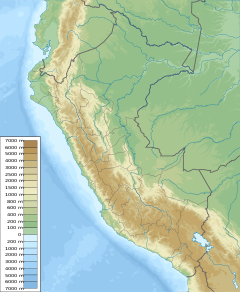| Rio Moche | |
|---|---|
| Location | |
| Country | Peru |
| Region | La Libertad Region |
| Physical characteristics | |
| Source | |
| • location | Laguna Grande |
| Mouth | Pacific Ocean |
• coordinates | 8°09′44″S79°02′05″W / 8.1622°S 79.0346°W |
The Moche River is one of the rivers of the Pacific Ocean slope, located in the northern coast of Peru, in La Libertad Region. On both sides of this river is the millenary Moche Valley. The Moche river goes through east to west the metropolitan area of Trujillo and its mouth is located in the Pacific Ocean in the limits of Moche and Victor Larco both towns of Trujillo city. [1]
